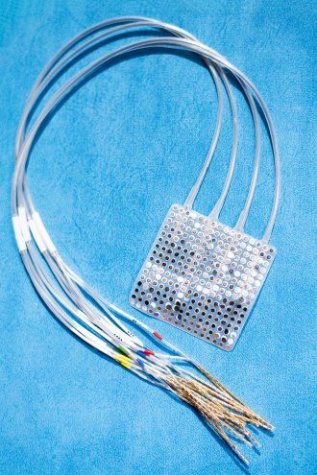
The study reveals that after pain processing therapy (PRT), patients reported reduced back pain intensity (© SciePro - stock.adobe.com)
SAN FRANCISCO, Calif. — For a person dealing with paralysis, it can feel like they’re trapped inside their own body. As scientists work towards building brain-controlled prosthetic limbs, a new study reveals the task of controlling those machines is about to get much easier. Researchers at the University of California, San Francisco find a paralyzed patient can control a computer’s cursor using a new system which learns to work with the user’s brain over time.
The brain-computer interface (BCI) is not a brand new invention. But scientists say this model allows patients to “plug and play” without struggling to relearn certain skills after shutting the prosthesis off.

“The BCI field has made great progress in recent years, but because existing systems have had to be reset and recalibrated each day, they haven’t been able to tap into the brain’s natural learning processes. It’s like asking someone to learn to ride a bike over and over again from scratch,” says study senior author Karunesh Ganguly in a university release.
“Adapting an artificial learning system to work smoothly with the brain’s sophisticated long-term learning schemas is something that’s never been shown before in a person with paralysis.”
This updated BCI uses a pad of electrode arrays the size of a post-it note. It is surgically implanted on the surface of the patient’s brain to record neural activity. This is different from previous BCI devices which use “pin-cushion” style arrays with sharp electrodes that penetrate a user’s brain tissue. Researchers say the problem with these older systems is they lose signal over time.
BCI has already made incredible breakthroughs
Earlier this year, a patient in Ohio regained the use of his right arm after a severe spinal cord injury. Using a BCI implant, researchers successfully connected neural signals between Ian Burkhart’s brain and arm.
Their device also attaches a series of electrodes to the patient’s skin. After making the connection to Burkhart’s arm, wires relay movement signals from the brain straight to the muscles — avoiding the area paralyzed by his spinal injury.
Burkhart now has enough control over his arm to lift a cup, swipe a credit card, and even play video games like Guitar Hero.
How does ‘plug and play’ BCI work?
The study in Nature Biotechnology documents how a patient with paralysis of all four limbs moves a computer cursor on a screen with their mind. The technology uses an algorithm which learns to match brain activity the ECoG electrodes record from patients.
At first, the study authors reset the algorithm each day after patients practiced moving the cursor. The BCI would eventually update itself, but it could take hours before the computer matched the person’s movements again.
The California team then stopped resetting their system, allowing the BCI to continually update itself as the brain sends out signals. Although the progress was initially slow, researchers say their patient is now able to use the system without the delay of starting over each day.
“We found that we could further improve learning by making sure that the algorithm wasn’t updating faster than the brain could follow — a rate of about once every 10 seconds,” Ganguly, a neurologist with UCSF Health adds. “We see this as trying to build a partnership between two learning systems — brain and computer — that ultimately lets the artificial interface become an extension of the user, like their own hand or arm.”
The brain adapts to technology
The study finds a patient’s brain eventually begins to maximize its connection to the BCI. The brain starts to identify what signals drive the ECoG electrodes most effectively and eliminates other, weaker signals.
This mental model the brain forms with the interface is something that doesn’t happen when scientists were resetting the machine each day. UCSF finds a patient will retain this model of how to use the BCI even if it is reset after several weeks of use.
“Once the user has established an enduring memory of the solution for controlling the interface, there’s no need for resetting,” Ganguly explains. “The brain just rapidly convergences back to the same solution.”
Study authors are hoping this “plug and play” BCI will create technology which the body’s immune system doesn’t reject after long use. Although they’re less sensitive, ECoG arrays are more stable and possibly more reliable for the future of artificial limbs.
“We’ve always been mindful of the need to design technology that doesn’t end up in a drawer, so to speak, but which will actually improve the day-to-day lives of paralyzed patients,” the neurologist concludes.
[fb_follow /]










